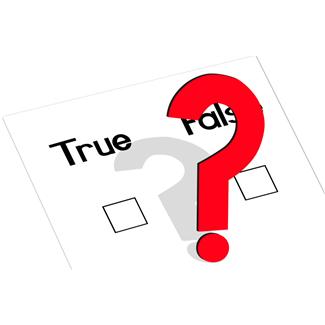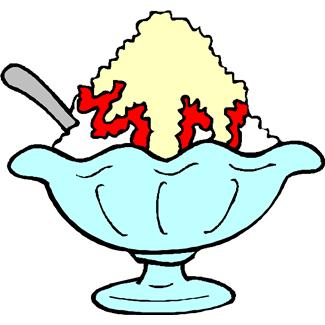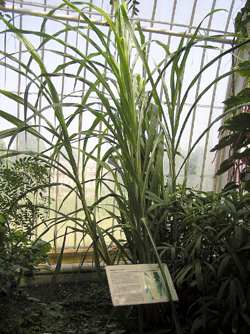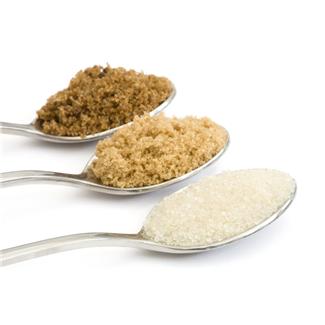Is Sugar Good For Our Health?
IS SUGAR GOOD FOR OUR HEALTH? (ISSUE 101)
By Diane Gold
Glucagon (pancreatic hormone) stimulates conversion of glycogen to glucose to blood stream.
Insulin (pancreatic hormone) decreases glucose in the blood by sending it to muscle cells or converting it back to glycogen for storage.
Those concepts are so complicated because each hormone has many functions of than those listed above, and their task of working to create a continual glucose balance in our bodies is affected by all those other functions and more. They are only two of the body’s sugar reaction processes.
Putting a large amount of sugar into our bodies tells our bodies to produce insulin to reduce the overload. This means the body will send some of that sugar to our muscles for energy and some will be stored in the liver. When there is a small amount of sugar in the blood stream, for example, after insulin has moved it and converted it; glucagon is released to go get some from the glycogen storage tanks in the liver.
So, is sugar good for our health?
A little more background first, please.
BLOOD SUGAR ROLLER COASTER
This process of reducing and increasing the glucose supply in the body is sometimes referred to as the blood sugar roller coaster. It is caused by eating too much sugar (all of which turns to glucose). It is also caused by eating processed and packaged foods that leave the body devoid of nutrients because not having the right nutrients will cause insulin resistance and other malfunctions. One common way is to cause a lack of sensitivity to insulin, which, in turn, can cause glucose to be stored as fat which causes more insulin to be produced, the insulin roller coaster and weight gain.
THE DRUG ADDICT EFFECT
At the time the body is overloaded with sugar, the body will experience a feeling similar to a drug rush. We’ve all heard of keeping sugars away from children at night because they will get high on sugar and not go to sleep.
Here is a quote from a prestigious researcher, Marcia Pelchat, PhD, scientist at Monell Chemical Senses Center, world-class research center in Philadelphia that studies taste and smell. The animals she refers to are those used in researching sugar addiction. She says,
“There are the same kinds of changes in brain dopamine in these animals given intermittent access to sugar, as in drug addicts.”
 This makes complete sense from a visceral point of view. Let’s say we have not had cake, cookies, candy, ice cream for a while because we always eat too much or because we have heard sugar is bad. What happens when we have some?
This makes complete sense from a visceral point of view. Let’s say we have not had cake, cookies, candy, ice cream for a while because we always eat too much or because we have heard sugar is bad. What happens when we have some?
I can give personal credence to Pelchat’s quote above. When I take one bite of sweet food and let the flavor permeate my mouth, I want more. Once I have another bite, I want even more. The craving I feel for the sugar food feels the same as it does for a drug or alcohol, except I can feel my urge growing stronger with every bite, as if I am feeding an urge machine inside myself.
When I buy favorite flavors of coconut milk ice cream, I know the entire half pint will be gone in the same day. Even if I haven’t had a sweet food for months, that’s just how it goes, unless I control myself, which I see no need for, since I only eat sweets on rare occasions. It also helps that I’m vegan, and so much of the sweet foods are no temptation since they are not vegan-appropriate for me.
When I have no dessert-y foods, I am fine, since I savor the sugars in my vegetables (especially steamed spinach, believe it or not). When I have sugar, I want more. It feels the same as any other cravings, but expert research differs on addiction to sugar.
Pelchat mentioned the analgesic effect on pain when babies drink sweet solutions. This reminds me of the drastically calming effect apple cider had on me last week after I came home from a psychically traumatizing MRI test. I completely relate to her statement, here, too.
SUGAR ADDICTION
Mark Hyman, MD, wrote in the Huffington Post, about a June 13, 2013 study first published in the American Journal of Clinical Nutrition that shows sugar addiction is a biological reality. A group of young men, 18 to 35, drank a milkshake and had their blood, glucose, insulin and hunger levels checked after four hours. They came back two weeks later to have another milkshake that tasted exactly the same with the same protein, fat, carbs, calories, macronutrients, taste yet the glycemic index of the second shake was much higher. The result was the part of the brain that controls addiction,
“Their nucleus accumbens, lit up like a Christmas tree,”
said Hyman, paraphrasing from the study.
So the brain could tell the difference even though the taste buds could not. And the high glycemic ingredients caused hunger and huge biological reaction in the addiction control panel of the brain. Looks like addiction. Feels like addiction. More research will cement the idea.
THE SUGAR INDUSTRY
 According to some old US Department of Commerce sales reports, researched, converted to approximate consumption and infographed by Stephen Guyenet, an obesity researcher at University of Washington, B.S., biochemistry, PhD, neurophysiology, and Jeremy Landen, as of 2012, we consumed approximately 100 pounds of sugar per year. In 1822, we consumed 6.3 pounds per person per year. Another way of looking at it is that in 1822, we consumed the equivalent of a can of cola’s worth of sugar in five days. Now, we consume that number in seven hours. That’s 19 times an increase.
According to some old US Department of Commerce sales reports, researched, converted to approximate consumption and infographed by Stephen Guyenet, an obesity researcher at University of Washington, B.S., biochemistry, PhD, neurophysiology, and Jeremy Landen, as of 2012, we consumed approximately 100 pounds of sugar per year. In 1822, we consumed 6.3 pounds per person per year. Another way of looking at it is that in 1822, we consumed the equivalent of a can of cola’s worth of sugar in five days. Now, we consume that number in seven hours. That’s 19 times an increase.
Here’s how consume so much. Sugary substances form glucose in the body. Many substances are sugar but have a different name, so we are not even aware we are ingesting them. When we read a label, we may be missing a term. And what happens when we don’t bother reading it? Even worse, if a product has a label and is not fresh, whole food, why are we eating it, anyway?
THE EMORY U AND CDC STUDY, 2010
On April 20, 2010, Emory University and the Center For Disease Control published a study in the Journal Of The American Medical Association showing that added sugars from processed foods and beverages may increase cardiovascular disease risk factors. The study involved 6000 people between 1999 and 2006. Miriam Vos, co-author, MD, MSPH, clarifies that the study was cross-sectional, and the participants’ data was taken once. She says,
“We found that people eat an average of about 21 teaspoons per day of added sugars. And that level of sugar was associated with increased cardiovascular disease risk.
“In our study, we looked at a range of consumption of added sugar ranging from 5% per day to greater than 25% of calories per day. … And what we found was the best cholesterol levels were in people eating 5 or 6 teaspoons of sugar per day or less.”
NOTE
There are several reputable studies that put our daily average sugar consumption at 10 or 15 teaspoons higher than the Emory study.
SUGAR LABELING
 According to the FDA’s food labeling provisions, not all sugars are required to be listed. Currently, regulation 101.9(c)(6)ii requires that the sugars that must be counted within the labeling system are mono- and disaccharides. That means glucose, fructose, lactose, sucrose. All other sugars may be included voluntarily. That includes fiber and sugar alcohols such as sorbitol, xylitol, mannitol.
According to the FDA’s food labeling provisions, not all sugars are required to be listed. Currently, regulation 101.9(c)(6)ii requires that the sugars that must be counted within the labeling system are mono- and disaccharides. That means glucose, fructose, lactose, sucrose. All other sugars may be included voluntarily. That includes fiber and sugar alcohols such as sorbitol, xylitol, mannitol.
Here’s a food-for-thought comment from someone on a health blog. The commentor cited correctly that maltodextrin does not count within the nutritional term sugar on a food label because it is not a simple sugar. He goes on to say,
“Can you see how a savvy food manufacturer might use this to [its] advantage? Perhaps by replacing some of the “sugar” with refined starches [like maltodextrin]– still just as sweet, still just as much Blood Glucose effect — while being able to claim (very loudly),
‘Now with less added sugar!'”
SUGARS
Here is a good list of sugars we may encounter:
Agave nectar, barley malt syrup, beet sugar, brown rice syrup, brown sugar, cane crystals, cane juice crystals, cane sugar, coconut sugar, coconut palm sugar, corn sweetener, corn syrup, corn syrup solids, dehydrated cane juice, dextrin, dextrose, evaporated can juice, fructose, fruit juice concentrate, glucose, high-fructose corn syrup, honey, invert sugar, lactose, maltodextrin, maltose, maple syrup, molasses, palm sugar, raw sugar, rice syrup, saccarose, sorghum, sorghum syrup, stevia, sucrose, syrup, treacle, turbinado sugar, xylitol, xylose.
Let’s not forget that most corn or corn product in the United States is made from genetically modified seed, unless it is certified organic. That means some of the sugar substances are definitely genetically modified (GMO), and our research is needed there, too.
The industry wants to sell product. That is its first responsibility. Our health comes second. That’s what’s common. Therefore, it is our responsibility to be informed about what counts on a label, what is a sugary substance and whether it helps our health.
CONCLUSION
 Regulation of sugar intake is good. Knowing what sugary substances we ingest is great. If we don’t stress our bodies by putting them through the sugar roller coaster, we are better off. If our bodies react poorly to high sugar intake, we can notice it. Is sugar bad for our health? It depends upon which kind of sugar, the condition of our health, how much and our lifestyle.
Regulation of sugar intake is good. Knowing what sugary substances we ingest is great. If we don’t stress our bodies by putting them through the sugar roller coaster, we are better off. If our bodies react poorly to high sugar intake, we can notice it. Is sugar bad for our health? It depends upon which kind of sugar, the condition of our health, how much and our lifestyle.
Unhealthy food is always bad for us. This would mean any processed, artificial anything can’t be the best choice to make. So much of what many of us eat includes fake sugar or processed sweetener. These can’t be the best choice. At least, now, we know that there are many words for “sugar,” and most of them are not required to be included in the sugar content on a label. Which means that we have to be careful to do our own research after reading a label. And we should remember that many of the corn sweeteners are GMO.
So, the subject of whether sugar is bad for our health is complex. It depends upon us, and it depends upon what form of sugar we use. The least amount of processed sugar, of course, is the best. Organic is best. Fruits and vegetables are sweet. They give us the sugar we need without processing. If we keep being diligent about what we consume, we will keep improving our awareness and our health. Then we will be able to answer the question for ourselves from the inside out.
ACTION STEPS
1) Notice how you feel after eating something very sweet, and write it down.
2) Roughly calculate how much sugar you consume as added sugar, meaning not the sugar in your fruits and vegetables. A great site to look at is http://sugarstacks.com. It shows how many sugar cubes each sugar food equals.
Since labels, give sugar values in grams, note that 1 tsp. = approx. 4 g of sugar.
3) a) If you have difficulty in stopping sweet consumptions, eliminate Monday sweets for two weeks.
3) b) Eliminate Friday sweets for two weeks, continuing with the eliminated sweet from Monday.
3) c) After the first four weeks, remove sweets on Tuesday, Wednesday and Thursday, continuing this regime for a month.
3) d) Cut out sweets on Saturdays. That means no sweets Monday through Saturday for a month. If necessary, add Wednesdays back in.
3) e) Now, three months later, notice how you feel after your Sunday sweet; write it down. Compare to the first day.
OPTION
If you’re like me, your cravings may require you to decide to stop all sweets and plan on a sweet once a month. Having the sweet once a week would create too large a craving in me unless I abstained for three to six months first.
_____
We are good for our health as long as we make great choices.
![]()
FEEDBACK
Please leave a comment and LIKE at http://warriorsofweight.com/?p=2707.
DIANE GOLD, AUTHOR
Diane Gold, Founder of Warriors of Weight, Turning Habits Into Health, is a mentor in tai chi, kung fu and meditation, a music, fitness and stress expert, dedicated mom, studying plant-based nutrition and habit change.
She has been researching a sugar article for some time. She says,
“Although the process by which the body turns our foods into usable nutrients is extremely complex, I decided to put out a few facts about sugar. The sensitive nature of the hormones and neurotransmitters involved in our body processes needs special care to work properly.
“The more labelless foods we consume, the better off we are. If we’re reading a label, we’re probably looking at food in a package, which, by nature, along with processed foods, has fewer nutrients and artificially inflated nutrients. It’s always a good idea to eat fresh food, so any package might be a mistake, most of the time. We should be good to ourselves and eat fresh, unprocessed, organic food. And it’s also a good idea to know our sugar intake.
“As far as answering the question,
‘Is sugar good for our health?’
“hopefully, the background information above is helpful in arriving at the answer.”







